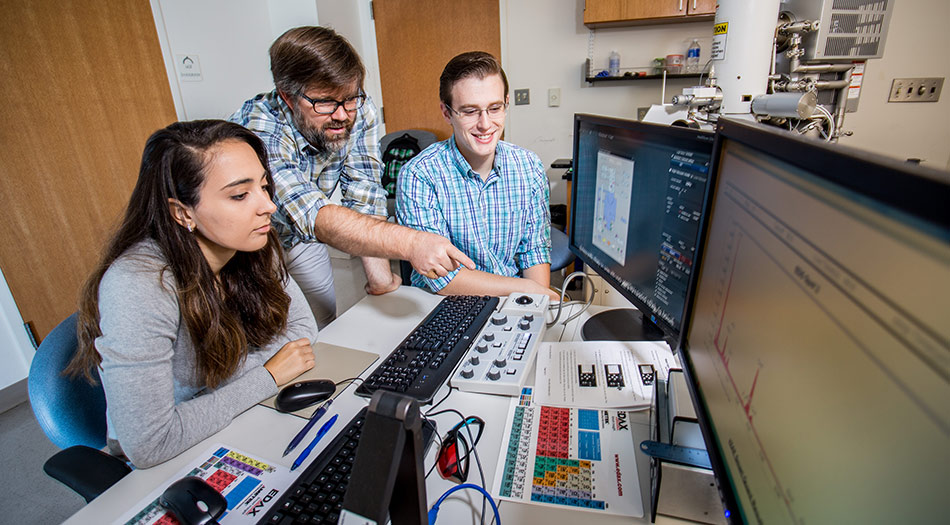
A state-of-the-art variable pressure field emission scanning electron microscope (FE-SEM) in the School of Science—similar to only a dozen others in the world—is now giving TCNJ undergraduates levels of experience normally reserved for faculty, postdocs, and grad students at top research universities.
But that’s not all—a second advanced instrument called an atomic force microscope (AFM), is on the way for spring 2016. The AFM will have even more resolution and include complementary capabilities.
Housed on the first floor of the Science Complex and coordinated by associate professor Nathan Magee, the Hitachi SU5000 FE-SEM has an ultimate resolution of about one nanometer, which means researchers can study groups of about 10 to 15 atoms at a time.
Accessories that help make TCNJ’s FE-SEM unique include a cryostage for studying the nanoscale behavior of ice and specialized detectors to map chemical composition and crystallographic features.
Magee and his students recently used advanced microscopes to observe that ice crystals in cirrus clouds may look smooth, but actually have rough surfaces at the atomic level. Understanding this roughness and its role in scattering light may help explain how crystal structure impacts climate, he said.
“One specific attachment—the cryogenic transfer system—is necessary to keep our crystals cold,” says Luke Bancroft, a senior physics major. “It is a complex system involving liquid nitrogen that can cool the SEM stage and transfer system to temperatures below -170 Celsius. We retrieve ice from cirrus clouds via a weather balloon and the transfer system makes it simple for us to get them in the scope to image them.”
These instruments are arriving at a heady time in the history of the TCNJ School of Science and TCNJ Physics Department. This fall, the American Institute of Physics, which ranks physics departments by numbers of graduates, placed TCNJ in the top one percent nationally among non PhD-granting institutions, and among the top five percent among all institutions. (Ranks based on TCNJ’s 32 physics grads in 2013-14.)
Departmental prestige has not fostered possessiveness. Magee said the scopes will be available for use across disciplines.
“Versatility is a big consideration when deciding which instruments to get,” he said. “We choose options to make them as widely applicable as possible. We’ve got faculty and students in chemistry, biology, engineering, and physics who have already learned to use the instruments, or are planning to. There may be others outside the School of Science, in art or criminology for example, who could use them.”
Funding for the microscopes originates in the “Building Our Future Bond Act” which was approved by New Jersey voters in 2012. The ballot initiative okayed about $750 million statewide to upgrade public and private colleges. For TCNJ, the act supports the $75 million science, technology, engineering and mathematics (STEM) building currently under construction.
—Bill Haduch
